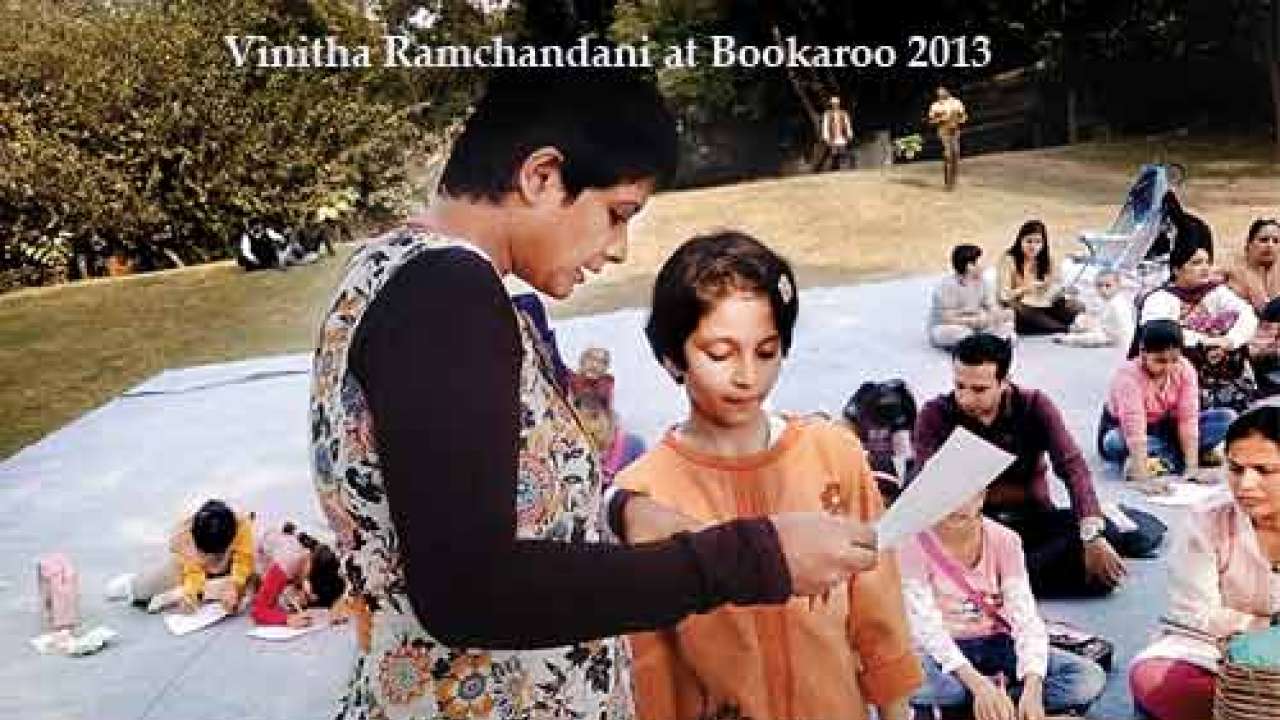
Vinitha Ramchandani, the author of over 20 published books for children, is currently working as a senior editor with a Mumbai-based book-publishing firm. An ex-journalist, she has 16 years of experience in editing and writing. Two of Ramchandani’s stories, Sethu Learns to Smile and When the Mountains Laughed, have been selected by the Central Board of Secondary Education as part of their English curriculum. Her latest book, Vriksha—Original Tree Stories and Real Tree Facts, was launched last month at Bookaroo 2013.
1 What made you try your hand at writing for children? What do you like best about it?
I come from a family of storytellers. My mother has always been an amazing storyteller. Even a mundane encounter in her day is a story, a riveting one at that. Her stories whether from fables or from her life always have method: a beginning, a structure, the plot, and a resolution. Having grown up with stories surrounding me, I could tell stories almost from the time I could speak.
Putting it all down, I guess, was the next natural step.
2 Do you find any difference between the kind of books you read as a child and what is being written now?
Yes, in terms of the content. For the longest ever, Indian kids read about fairies and pixies and picnic baskets filled with crumpets, scones, and treacle pudding. None of this was bad, but we have now realised that we need to have stories that have an Indian context–a context that the audience can relate to. English textbooks too have changed–poems available to children are revised with this same cultural context in mind. Another trend that I see globally is that stories nowadays deal with many societal nuances and changes that today’s children often have to deal with, like parents separating, being bullied, children with learning disabilities and more. Also, there is a growing acceptance of Asian authors and their regional stories.
3 What about the target audience? Have you noticed any change in them?
The more you interact with children the more you will be filled with wonder. The only sad or rather puzzling thing is that very often during my workshops I have noticed that the younger the kids, the more creative they seem to be. This makes me wonder, ‘What are we doing to our children? Are we teaching them to stop imagining as they grow up?’ Both are really hard to understand and answer.
4 How was your latest book received at Bookaroo? What is it about?
Vriksha—Original Tree Stories and Real Tree Facts is a set of nine stories about trees that are found across India. It started with a workshop on trees that I was doing for an activity centre in Bandra. The idea was to take children for a walk where I would tell them about one tree per walk.
At the end of the ‘fact-walk’ we would sit down and I would tell them a story about that tree, so that the facts they had seen and learnt during the walk would be re-emphasised.
During the workshops I found that the kids were not interested in the facts (their accompanying parents were!). So, I reworked the workshops. I would tell them the story first and then we would set off looking for the tree, trying to identify them via the clues in the story.
5 Tell us something about the kind of workshops you have done? Tell us about your next workshop.
I have done workshops for teachers on why they should use stories to teach, even Math. I think stories are powerful tools to convey concepts for a lifetime. I do creative writing and storytelling workshops for children. Each workshop is inspiring because invariably and inadvertently children teach you so much.
My next workshop, which is for Junior’s Writers Bug, is at Mahim Nature Park. I plan to tell one story from my book Vriksha without telling the name of the tree. There are clues about the tree within the story itself. However at the end of the story I will give them more clues. The children will have to draw the tree from their imagination, based on what they hear. I have done this in two different sessions. It is unbelievable how close the children come to drawing the real tree. At the end of the workshop the kids go back with an inclination to observe nature around them.